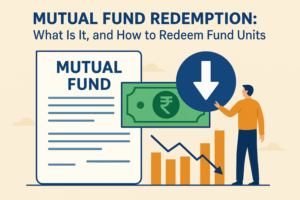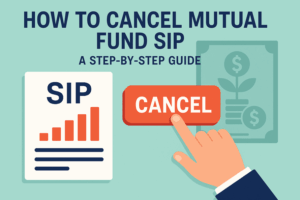SIP Calculator
×
The 10 best tax-saving instruments and the returns they offer

Tax saving is an integral part of financial planning. With the right tax-saving investments, smart taxpayers can minimize tax deductions. The income tax department under the government of India allows taxpayers like you to invest in specified investment schemes and reduce your tax outgo. In this blog post, we discuss the best 10 tax-saving instruments that offer tax rebates and also provide investment returns.
Equity Linked Savings Scheme (ELSS)
The ELSS or Equity Linked Savings Scheme with around 80% of investment in equities, yields the highest return among tax saving schemes. Section 80C of the Income Tax Act allows you to save up to ₹1.5 lakh per annum from your taxable income through ELSS investment. Historically, ELSS offers around 12% to 15% annual returns, which is higher than other traditional tax-saving instruments. However, being an equity-oriented mutual fund, the returns are subject to market risks and volatility and are not guaranteed.
Moreover, the lock-in period of ELSS is only 3 years, which makes it an investor favorite. Furthermore, you can start investing in ELSS with just Rs. 500 and you can choose to close the the investment after the lock-in period. Therefore, this short-term investment scheme figures in the list of the best 10 tax-free investments in India today.
Public Provident Fund (PPF)
Public Provident Fund (PPF) is clearly one of the favorite tax-saving instruments in India. Just like the ELSS, PPF also offers complete exemption from taxation if the amount of investment is below Rs. 1.5 lakh. Also, the interest that you earn on this amount is not considered for tax purpose. However, the mandatory lock-in period of PPF is 15 years, which can create problem if the investor wants to withdraw early. The rate of interest of PPF is revised quarterly by the government and remains fixed for the next quarter. The return on investment is thus also fixed here as it is predetermined by the central government.
“Start investing with confidence! Explore the best
mutual funds
and grow your wealth.”
Senior Citizen Savings Scheme (SCSS)
Another tax-saving instrument under Section 80C is the SCSS. The tax-free scheme also enables you to save up to Rs. 1.5 lakh on your investment amount. However, this investment plan is available only to citizens aged above 60. However, for individuals who worked in the Indian defence sector, the age bar is 50 years, whereas for individuals who opted for a voluntary retirement, it is 55 years. Individuals can invest up to Rs. 15 lakh in SCSS, the interest rate of which is determined by the government of India.
Sukanya Samriddhi Yojana (SSY)
Sukanya Samriddhi Yojana helps you save up to Rs. 1.5 lakh per annum. However, here too you will have to meet one criterion to avail this tax-free investment scheme. That is the investment can be made only if you have a girl child aged below 10 years. With a minimum of Rs. 250 and a maximum of Rs. 1.5 lakh investment, you can start this investment in the name of your daughter. Launched under the central government’s “Beti Bachao Beti Padhao policy,” the SSY scheme offers a comparatively higher interest rate than the PPF. The interest rate of SSY in the Q3 FY 2024-25 is 8.2% per annum. The maturity period for the Sukanya Samriddhi Yojana is 21 years from account opening or upon the daughter’s marriage after attaining 18 years.
Tax Saver Fixed Deposit (FD)
If you have a fixed deposit that has a lock-in period of over five years, it is eligible for tax exemption under Section 80C. Such FDs are called tax-saver fixed deposits. With their guaranteed returns, fixed deposits are a popular investment option for risk-averse individuals. However, the interest that you earn under this scheme is taxable. Also, in case of any premature withdrawal, you will not get the tax benefits. Here too, you can claim up to the amount of Rs. 1.5 lakh for a tax deduction. The rate of interest in your fixed deposits will be anywhere between 5% to 8.5% depending on the bank you are choosing to invest your money in.
National Pension Scheme (NPS)
Section 80CCCD (1) of the Indian Income Tax Act of 1961 allows employees to save up to 10% of their salary from taxes by investing in the National Pension Scheme. Self-employed individuals can claim an additional Rs. 50,000 under the Section 80CCD (1B). It is arguably the best investment plan for working professionals with tax saving and retirement benefits. To start investing in the NPS, you can start with a minimum investment of Rs. 500 or go with an annual amount of Rs. 6,000.
National Savings Certificate (NSC)
Another effective tax saving option for you is the National Savings Certificate (NSC), a fixed-income investment scheme. With an annual tax exemption of Rs. 1.5 lakh on your invested amount and also for the reinvested interest amount, it is one of the profitable investment options for taxpayers. There are two different maturity periods for NSC: 5 years and 10 years. It is entirely up to the investor to choose their maturity period. But you must know that with a longer investment period, you will get a higher return and tax benefits on your accrued interest. This exclusive fixed deposit scheme offered by India Post offers high returns and tax-saving options.
Unit-Linked Insurance Plans (ULIP)
If you prefer high tax-free return in the equity market, ULIPs can be your choice of investment. Here, you can expect between 11 to 20% investment growth on investing for a long period. Along with life coverage, and financial security, you will get a high return from debt instruments and equity. Through this tax deduction investment scheme, you will get a redemption of up to Rs. 1.5 lakh. In case the invested money is below Rs. 1.5 lakh, you can save up to 10% of the total premium amount.
Life Insurance
Section 80C allows you to deduct the premium paid for life insurance from your income tax liability. However, you will need to ensure that the premium payment should not exceed Rs. 1.5 lakh to avail the tax-saving benefit. In case of the death of the insured, the lump sum amount paid to the beneficiary will get tax exemption under Section 10 (10D) of the Income Tax Act of 1961.
Comparison of various tax-saving instruments
The chart below will give you a comprehensive comparison of various tax-saving instruments and their returns.
| Instrument | Lock-In Period | Return | Risk Level |
| ELSS | 3 years | Return is dependent on the market | High |
| PPF | 15 years | The interest is fixed by the government | Low |
| SCSS | 5 years | The amount of interest is fixed and set by the government | Low |
| SSY | 21 years | The interest return rate is fixed by the government | Low |
| FD | 5 years | The return rate of FDs is also fixed. It depends on the set interest rate of the bank or other financial institution | Low |
| NPS | Investors can withdraw up to 60% of the NPS corpus once they turn 60 | Depends on asset allocation and pension fund managers selected | Moderate |
| NSC | 5 to 10 years | Interest is fixed and dependent on the interest set by the government | Low |
| ULIP | 5 years | Returns are calculated based on the NAV of the fund | Moderate to High |
| Life Insurance | Depends on the tenure of the policy taken | Return is fixed as per the policy mandate | Low |
The comparison chart shows that most of the tax-saving instruments offer returns with low risk. Therefore, you can select your preferred tax-free scheme considering the lock-in period and the flexibility or liquidity of the invested money.
Conclusion
If your question is which instrument saves tax for you, the answer is all of the above. There are multiple ways to save tax, but these tax-saving instruments give you dual benefits by reducing your tax liability and facilitating long-term wealth creation.
Disclaimer
The stocks mentioned in this article are not recommendations. Please conduct your own research and due diligence before investing. Investment in securities market are subject to market risks, read all the related documents carefully before investing. Please read the Risk Disclosure documents carefully before investing in Equity Shares, Derivatives, Mutual fund, and/or other instruments traded on the Stock Exchanges. As investments are subject to market risks and price fluctuation risk, there is no assurance or guarantee that the investment objectives shall be achieved. Lemonn (Formerly known as NU Investors Technologies Pvt. Ltd) do not guarantee any assured returns on any investments. Past performance of securities/instruments is not indicative of their future performance.







